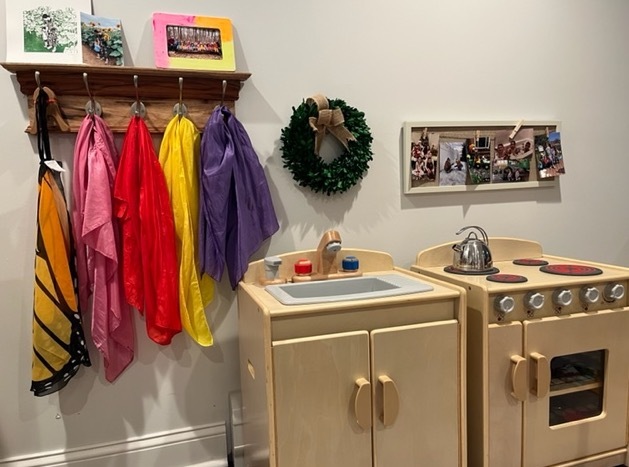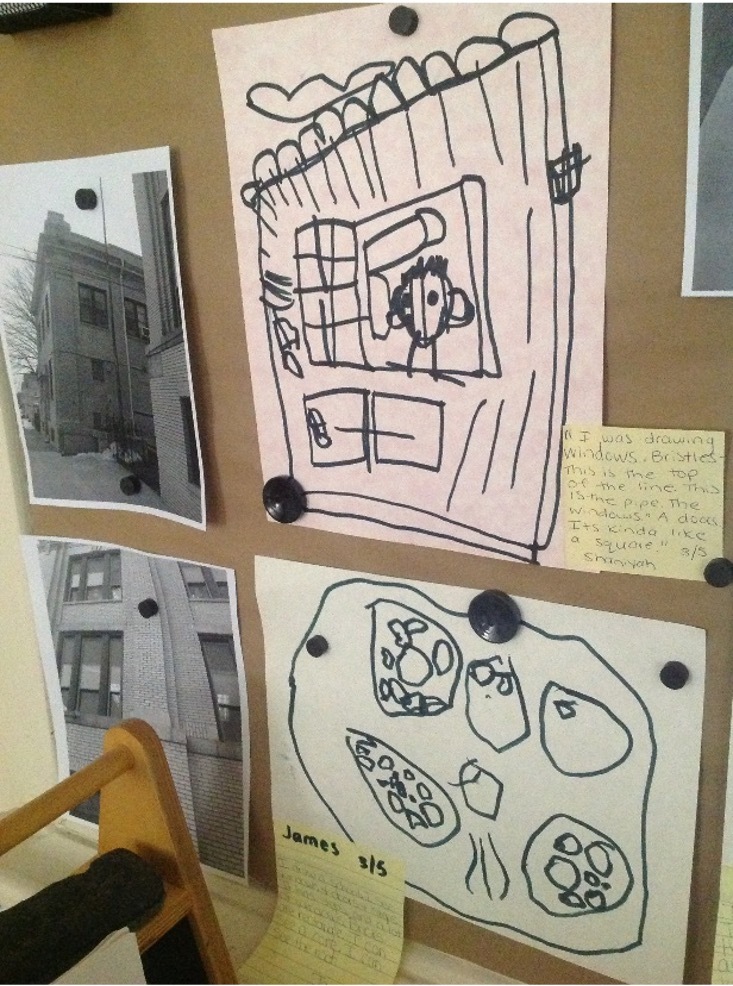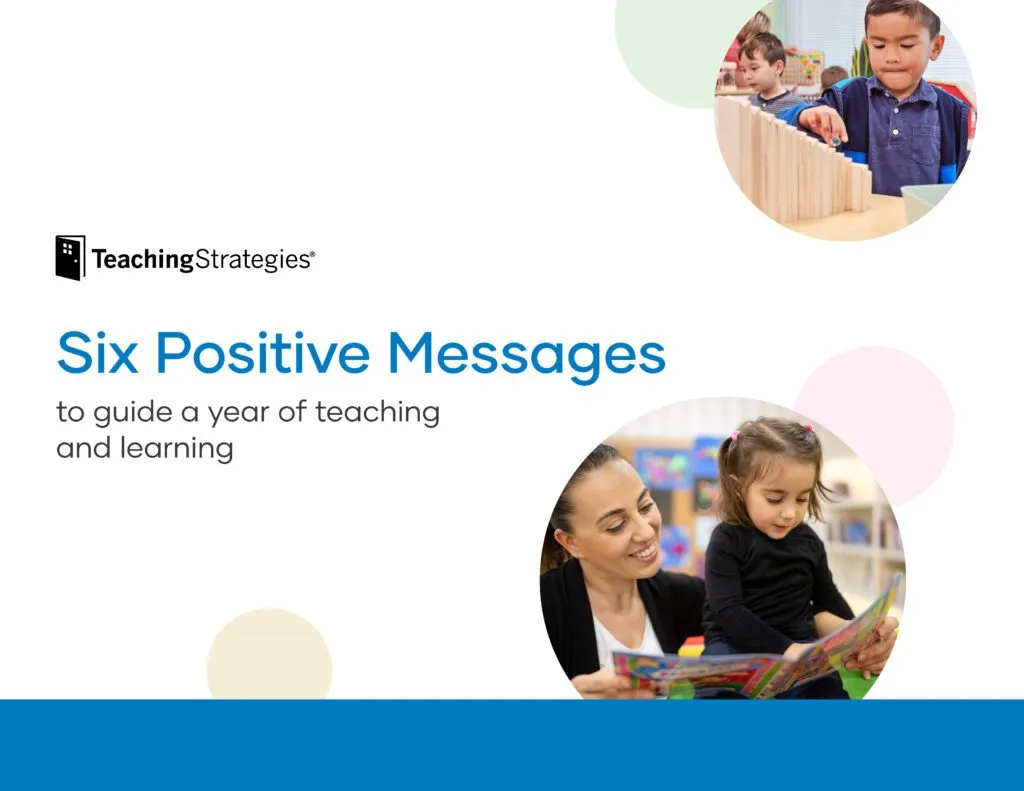Less But Better


Back to school time…
The waxy smell of fresh crayons paired with the dire urge to clean, organize, and purge materials! Oh, the possibilities! Although arranging materials appeals to my Type A personality, fortunately, it also plays a crucial role in establishing a well-designed and inviting physical space.
Whether you are beginning a new school year or continuing in a year-round program, the fall is the perfect time to hit the reset button on so many things in our learning environments, from the types of materials and the way they are offered to our wall displays. However, toiling away at creating a completely decorated classroom is not only unnecessary but also less inviting to those who will share the space than you might think. Offering everything all at once can also become overwhelming, not just as you set up your classroom, but as children’s interests expand and change throughout the year.
Rather, allowing the environment to take shape and evolve along with the people tells children and families “You belong here.” As you prepare your classroom, I invite you to consider five strategies that can help you embody the motto “less, but better.”
1. Create Wall Displays Alongside Children
It is okay to begin the school year with bare walls. Design displays with the children once they begin creating and engaging in the experiences you offer. Creating and displaying children’s original work honors their creative ideas and efforts and helps to establish the classroom community. When children’s authentic art pieces, photographs, and writing are displayed at their eye level and in ways that recognize their individual experiences, you send a clear message to children and their families: “You can freely express yourself here, and your ideas are valued and respected.” Essentially, beginning with a blank slate allows wall displays to evolve with children and reflect each year’s unique group of learners.

2. Limit the Number of Items on Shelving
Beginning the year with clear visual supports, which includes the ways materials are organized and offered, sets the stage for children to engage in high-quality play. Having fewer items at the start of the school year allows you to call attention to and present materials in ways that invite exploration. Avoid piling items on top of one another, as this limits accessibility and can overwhelm children and adults alike. Rather, intentional, and clear presentation invites children to easily choose the materials they would like to work with. Teachers can offer materials in visually accessible ways by
- ensuring storage containers do not have lids and children can easily see what is inside,
- clearly and logically grouping materials by specific type or attribute,
- making certain shelving remains clean and free of clutter, and
- ensuring books are stored with their covers facing out.
3. Try Offering Materials in a New Way
Your classroom’s aesthetic has a lot to do with the way children feel and learn while they are at school. Limiting the number of items available in a given area offers an opportunity to try something new this year. For example, if you typically store all your beads or markers in one bin in the Art area, why not separate and store them by color instead? This simple change not only looks beautiful but also supports self-regulation, as children must pause and consider the way materials are grouped before putting them away during clean-up routines. You may also consider functional additions to interest areas that make it easier for children to access materials, such as a peg board for storing items on hooks, a revolving tray or turntable to subtly promote the sharing of classroom materials, tempera paints in squeeze bottles to support children’s growing independence, or a featured book on a small easel. Freeing up space may allow you to add decorative touches, such as a soft-lit lamp, dried flowers, interesting artifacts, or a colorful basket, which can create a homey and inviting feeling.

4. Organize Storage
Having adequate storage space is a dream for most educators. Although space may be limited, organizing your “teacher materials” is a key factor in reducing stress so that you can begin the year feeling prepared and confident. For storage to be functional, you will want to create some type of system. You may consider creating separate storage bins to keep study-related items in one space or keep extra consumable materials in one area of the classroom. As the year unfolds and you begin to modify some of the materials you offer to children, knowing where to locate what you need will make transitioning items that much easier.

5. Purge
As teachers, we are always looking for new and interesting items to add to our collections. While growing resources is important, so is purging items that will no longer serve you or the children in your care well. Look over your book collection and other materials and discard items that may include bias to ensure all materials are inclusive. Do you have an overabundance of a particular item? Consider offering extra supplies to a new teacher who is just starting her classroom collection or creating a lending resource space for families. Repurpose or dispose of broken items and materials with missing pieces. Although it can be hard to part with certain items, freeing up space will create room for new treasures you may acquire, and decluttering will lift the weight of disorganized supplies off your shoulders!

Lastly, remember to be gentle on yourself as you take on the important task of arranging your physical space, as setting up an early childhood classroom for the start of the school year is no easy feat. Fortunately, the decisions you make for a “less, but better” classroom will make day-to-day interactions and classroom tasks easier and help you engage children and their families in positive, impactful learning experiences in the year ahead.

Creating your classroom is about more than your physical space. Our free e-book, Six Positive Messages to Guide a Year of Teaching and Learning, provides strategies for building a strong classroom community from day one.